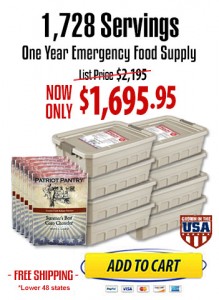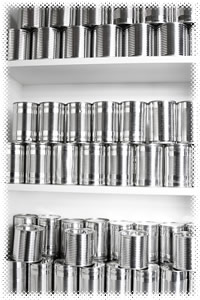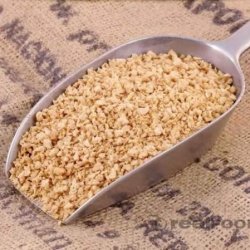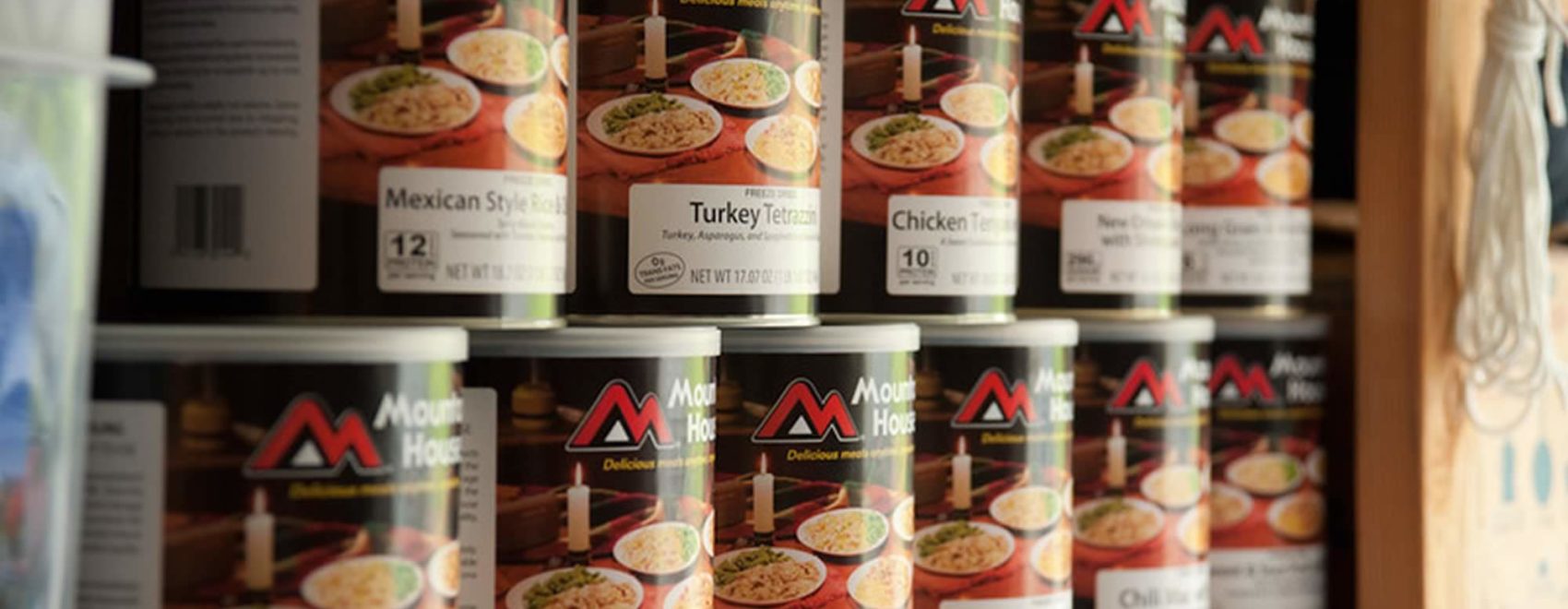Table of Contents
Survival Food Introduction
Having been in the survival food storage business since 2008 we have seen a lot of survival food storage companies come and go; as well as a lot of different marketing techniques. These strategies can leave the consumer guessing on which way to turn when considering Survival Food storage for their family. So, being self proclaimed food storage experts, we decided to put together a short tutorial to help shed some light on the subject.
If your new to this, and depending on how much survival food storage you intend to buy, this tutorial can actually be worth hundreds or thousands of dollars. We suggest that you take some time to understand how food storage is packages and sold.
It’s easy to forget what a fragile way of life we live and how dependent we are on the technological conveniences of modern life. Most of us have free-flowing water at our fingertips, electricity and power that feed directly into our homes, and grocery stores around the corner with shelves filled with row after row of fresh food to be had 24 hours a day.
But take one look at the news–the natural disasters that are occurring with increasing frequency and severity, the political unrest that constantly rages in countries across the globe, the economies failing all around us–and we are reminded that our system is not infallible. Indeed, it is a fragile system on which we rely, a little like an elaborate structure made out of dominoes–one single domino’s shift will send the whole thing crashing down.
It’s no surprise, then, that more and more people are getting educated on emergency preparedness. These people know that in an emergency situation, we cannot rely on governments or other people to provide for the needs of our families.
The only way to be sure that we and our loved ones will be taken care of in an emergency is to get prepared on our own. If we want to be able to meet our own and our families’ needs in a crisis, having a sufficient store of emergency food is a crucial first step.
But anyone who has begun to store emergency food knows that there is an overwhelming amount of conflicting and confusing information on the web about what to store, how much to store, and how to store it. In this book, we hope to provide some basic knowledge that will allow you to make the best choices for you and your family when building up a storage of emergency food.
Specifically, we will discuss common questions about how much food to store, the importance of storing healthy and tasty food, the benefits and risks of different types of Survival Food storage , and how best to store what you’ve bought.
5 Golden Rules of Survival Food Storage
Follow these rules for the best food storage buying experience
1. You will die before you eat your food storage, or you will eat your food storage before you die.
Kind of blunt huh? I lead off with this because it is probably the foremost thing that should be in your mind when buying Survival Food. You are buying a product with a 20 – 25 year shelf life. Think about it. If you invest hundreds, or thousands of dollars into food storage; are you going to simply chuck it into the garbage on year 20?
Of course not, you will eat it. That is unless you open it and it’s inedible, or you’re dead.
The vast majority of people buy Survival Food with the mind-set that it may never be used; which simply isn’t true. This has the tendency to make them to gravitate towards the cheaper less known off-brands. These off-brands can be found in abundance on consumer watch sites like Rip-off Report and the BBB.
2. Be Skeptical of Time Estimates and Servings.
Serving sizes are probably the biggest problem, other than quality, that you will encounter. Serving sizes are subjective and differ greatly from company to company. Food producers have been playing hard & fast with portion sizes and servings since they figured out how to package and market food products; long-term food producers are no different.

Smaller portions equal lower costs, which means that they can sell their “xxx serving bucket” for less money than their competitors can. Then, all they have to do is market their product by the servings (i.e.1500 Servings for $999) instead the actual contents of the package because the lower priced packages always win in this scenario.
If you buy Survival Food packages that are advertised by the “serving” you will most likely get too little food and spend too much money. Each food supplier and retailer has a totally different idea about how long their food storage should last the “average person.”
If you buy Survival Food based on the time recommendation (we actually offer this option) you will most likely burn through your supply much sooner than their recommendations unless that company lists calorie counts to prove their claims. If you are looking at food storage that does not list the total calorie count, you are paying too much.
3. Who is This Company?
If you haven’t heard of the brand, it’s probably for a reason. There are only a handful of true-blue freeze dried food producers. The rest are simply companies that “white label” their chosen brand names through mass dehydrated food producers.

These companies are marketing companies masquerading as a food company. If you read our blog you will see that we are no fan of these types of companies. They buy their ingredients from the cheapest sources, who use overseas suppliers and then have their products assembled in a thin mylar bag and throw in an oxygen absorber.
These companies could care less about the quality of their product or your satisfaction. 98% of all companies selling Survival Food have been in business for less than 10 years, 95% less than 5 years. So, how do they really know that their product will be edible in 25 years? Will they be in business in 25 years?
If you pick one of these companies, do your homework on who produces their food for them. Seriously, this is a HUGE problem in the industry. Many brands open to sell “Cheap Survival Food” then simply change their name when bad reviews and customer complaints mount.
4.Compare Calories.
How often do you eat the recommended servings on the food that you prepare right now? If you’re like me, not very often. So, it goes to reason, if you buy your emergency food storage by the serving, should you ever need it, someone is going on a diet, or you are going to burn through your food preps much quicker than you had anticipated.
Think about this, when you buy groceries, do you buy food based on how many servings each product has, or do you buy the amount of food that your family actually eats?
Calories do not lie, marketers do. If you compare the total amount of calories that you are buying in each package you will be able to accurately judge how long your Survival Food will last and better compare the true cost of the food. Do not buy a Survival Food package that does not list the total calories for that package! We get into this in detail below.

Once you’ve established that there are enough calories for your family in an emergency food, the next step is to make sure that the calories are good calries and not just fillers. Some readymade food storage packages are advertised as having 400 calories per serving, but then the majority of the calories come from things like drinks and desserts packed with sugar, or filler foods like shortening and butter. Cheap fillers like these will not sustain a person or family in an emergency situation. It’s better to look for calories that are made from real food that is nutritious and calorie-dense all on its own.
5. TVP (Textured Vegetable Protein) is Not the Same as Meat
A lot, I would say most, long-term Survival Food suppliers purposely create all of their main entrees to be vegetarian in order to appeal to a larger audience. They then offer freeze dried meats sold separately as add-on packages to supplement the vegetarian food entrees.

In order to give these vegetarian entrees the texture of real meat they use a meat substitute, TVPs (textured vegetable proteins.) I actually don’t have a problem with TVP’s except, when comparing products. TVP’s cost a lot less than using real meat which means products, like Mountain House, that use real meat in their products will appear to be more expensive than the ones using the meat substitute.
When in fact, If you were to include the cost of adding the meat package add-on to the vegetarian entrees you would see the prices line up to be much closer than it appears. Also, it is important to note: that the USDA (United States Department of Agriculture) only inspects food storage companies that use real meat in their meals.

